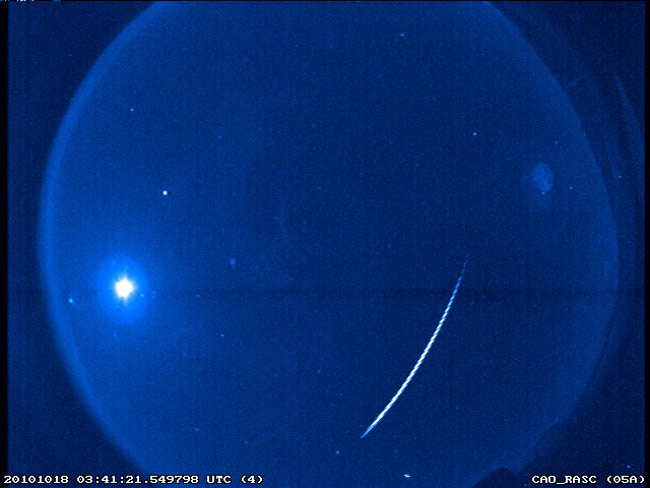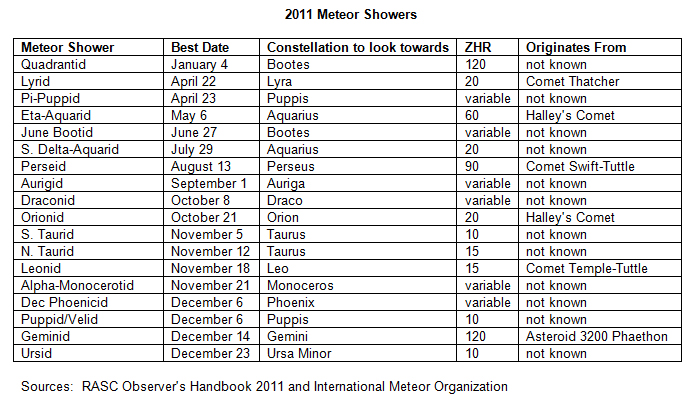Skywatching Guide: Meteor Showers of 2011

Meteor showers occur when the Earth's orbit takes it through the path of a comet, which spews debris as it passes, like junk falling out of the back of a poorly-secured garbage truck. Bits of debris plunge through the Earth's atmosphere, and friction causes the debris to burn up, creating meteors.

Current meteor forecast models project a strong Draconid outburst, possibly a full-blown storm, on Oct. 8, 2011, according to William Cooke of the Meteoroid Environment Office at NASA's Marshall Space Flight Center in Huntsville, Ala.
Get the Space.com Newsletter
Breaking space news, the latest updates on rocket launches, skywatching events and more!
Join our Space Forums to keep talking space on the latest missions, night sky and more! And if you have a news tip, correction or comment, let us know at: community@space.com.

Geoff Gaherty was Space.com's Night Sky columnist and in partnership with Starry Night software and a dedicated amateur astronomer who sought to share the wonders of the night sky with the world. Based in Canada, Geoff studied mathematics and physics at McGill University and earned a Ph.D. in anthropology from the University of Toronto, all while pursuing a passion for the night sky and serving as an astronomy communicator. He credited a partial solar eclipse observed in 1946 (at age 5) and his 1957 sighting of the Comet Arend-Roland as a teenager for sparking his interest in amateur astronomy. In 2008, Geoff won the Chant Medal from the Royal Astronomical Society of Canada, an award given to a Canadian amateur astronomer in recognition of their lifetime achievements. Sadly, Geoff passed away July 7, 2016 due to complications from a kidney transplant, but his legacy continues at Starry Night.










